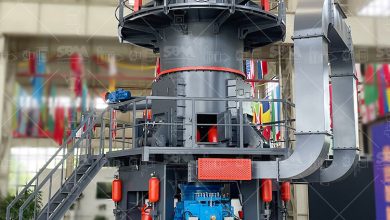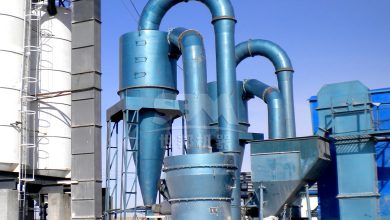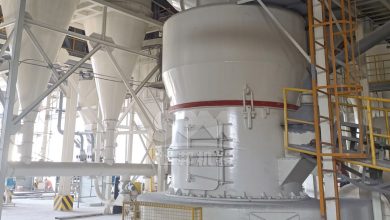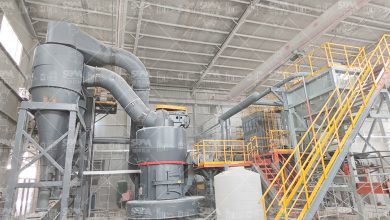Optimizing Industrial Performance with Ground Calcium Carbonate: Benefits, Particle Size Dynamics, and Advanced Milling Solutions
Ground Calcium Carbonate (GCC), a versatile mineral derived from limestone, marble, or chalk, has become indispensable across industries due to its unique physicochemical properties. As a cost-effective functional filler, GCC enhances product performance in plastics, paints, paper, construction, and pharmaceuticals. However, its efficacy is intrinsically tied to particle size distribution (PSD) and milling precision. This article examines GCC’s industrial benefits, explores how particle size governs its functionality, and highlights advanced milling technologies—particularly the MTW Series Trapezium Mill—that enable optimal GCC production.
Section 1: Industrial Benefits of Ground Calcium Carbonate
1.1 Cost-Effective Reinforcement
GCC replaces high-cost materials (e.g., titanium dioxide) while improving mechanical properties. In plastics, it enhances stiffness and impact resistance; in paints, it improves opacity and rheology. Its abundance and low extraction costs make it economically viable for large-scale applications.
1.2 Environmental Sustainability
GCC is non-toxic and chemically inert, aligning with green manufacturing trends. In papermaking, it reduces reliance on wood pulp, lowering deforestation pressures. Its use in biodegradable plastics further supports circular economy goals.
1.3 Functional Versatility
- Plastics & Polymers: Improves dimensional stability and reduces shrinkage.
- Coatings: Enhances scratch resistance and gloss uniformity.
- Construction: Acts as a strength modifier in cement and asphalt.
- Pharmaceuticals: Serves as an excipient for tablet formulation.
Section 2: Particle Size Impact on GCC Performance
The industrial value of GCC hinges on precise control over particle size and distribution. Key considerations include:
2.1 Fineness & Opacity
- <2μm particles: Maximize light scattering in coatings and paper, achieving superior opacity.
- 5–10μm particles: Balance opacity and viscosity in mid-gloss paints.
2.2 Particle Size Distribution (PSD)
A narrow PSD ensures consistent product behavior. For example:
- Plastics: Broad PSD causes uneven dispersion, reducing tensile strength.
- Pharmaceuticals: Wide PSD compromises tablet dissolution rates.
2.3 Surface Area & Reactivity
Finer GCC (e.g., 325–2500 mesh) exhibits higher surface area, enhancing chemical reactivity in rubber vulcanization or acid-neutralizing applications.
Section 3: Challenges in GCC Milling
Producing high-quality GCC demands overcoming three critical challenges:
3.1 Energy Efficiency
Traditional ball mills consume excessive power (e.g., 30–50 kWh/ton). Advanced mills must balance throughput with energy savings.
3.2 Wear Resistance
Calcium carbonate’s abrasive nature accelerates equipment wear, increasing maintenance costs and downtime.
3.3 Precision Classification
Inefficient particle separation leads to oversized particles contaminating final products, degrading performance.
Section 4: MTW Series Trapezium Mill: A Tailored Solution for GCC Production

To address these challenges, ZENITH’s MTW Series Trapezium Mill emerges as an industry-leading solution, combining cutting-edge engineering with operational efficiency.
4.1 Technological Superiority
- Anti-Wear Shovel Design: Composite shovel blades resist abrasion, reducing replacement frequency by 40%. Curved shovel geometry extends service life while maintaining material flow stability.
- Arc Air Channel Optimization: Patented airflow design minimizes turbulence, improving transmission efficiency by 15% and reducing energy loss. Reinforced wear plates ensure durability under high-load conditions.
- Integrated Gear Drive System: The fully enclosed bevel gear transmission achieves 98% efficiency, eliminating lubrication leaks and lowering noise to <75dB.
- Intelligent Particle Classification: Adjustable blade angles and rotor speeds enable precise control over fineness (30–325 mesh). Multi-stage separation ensures 99% of output meets target specifications.
4.2 Model-Specific Advantages for GCC
The MTW175G and MTW215G models are particularly suited for GCC production:
- Throughput: 9.5–45 ton/h, scalable for small-batch R&D or bulk manufacturing.
- Fineness Range: 30–325 mesh (adjustable to 0.038mm), covering all industrial GCC grades.
- Energy Savings: 30% lower power consumption vs. conventional mills, with a 315kW main motor optimized for heavy-duty cycles.
- Low Maintenance: Quick-release roller assembly and modular design reduce service downtime by 50%.
4.3 Case Study: GCC in Coating Applications
A paint manufacturer using the MTW215G achieved:
- 22% higher opacity with 2.5μm GCC.
- 18% reduction in TiO2 usage.
- Annual energy savings of $150,000 due to the mill’s high efficiency.
Section 5: Application-Specific Considerations
5.1 Paper Industry
- Target Fineness: 325–600 mesh (D97 ≤5μm) for high-brightness filling.
- MTW Advantage: Pulse dust collectors (99.9% efficiency) meet ISO 14644-1 cleanroom standards.
5.2 Bioplastics
- PSD Requirement: <10μm with D90/D50 ratio ≤2.5 for uniform dispersion.
- MTW Advantage: Dynamic classifier prevents coarse particles (>15μm) from contaminating outputs.
5.3 Construction Materials
- Coarse GCC (30–100 mesh): Enhances concrete compressive strength.
- MTW Flexibility: Rapid adjustment between fine/coarse modes supports multi-product lines.
Ground Calcium Carbonate’s industrial value is inextricably linked to particle size precision and milling efficiency. As industries demand finer, more consistent GCC, advanced technologies like the MTW Series Trapezium Mill redefine production standards. With its energy-efficient design, wear-resistant components, and unparalleled classification accuracy, the MTW mill not only optimizes GCC quality but also drives sustainable manufacturing practices. For enterprises seeking to leverage GCC’s full potential, investing in ZENITH’s MTW technology ensures a competitive edge in cost, performance, and environmental stewardship.





